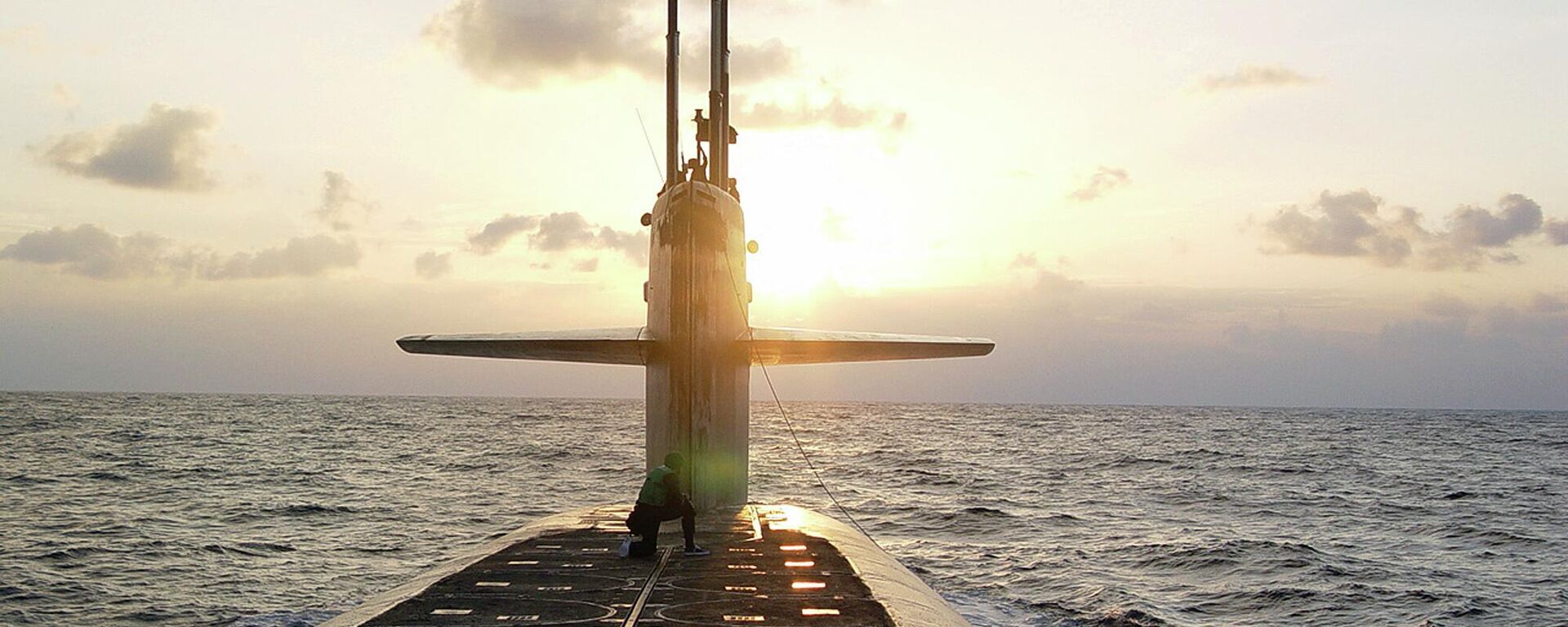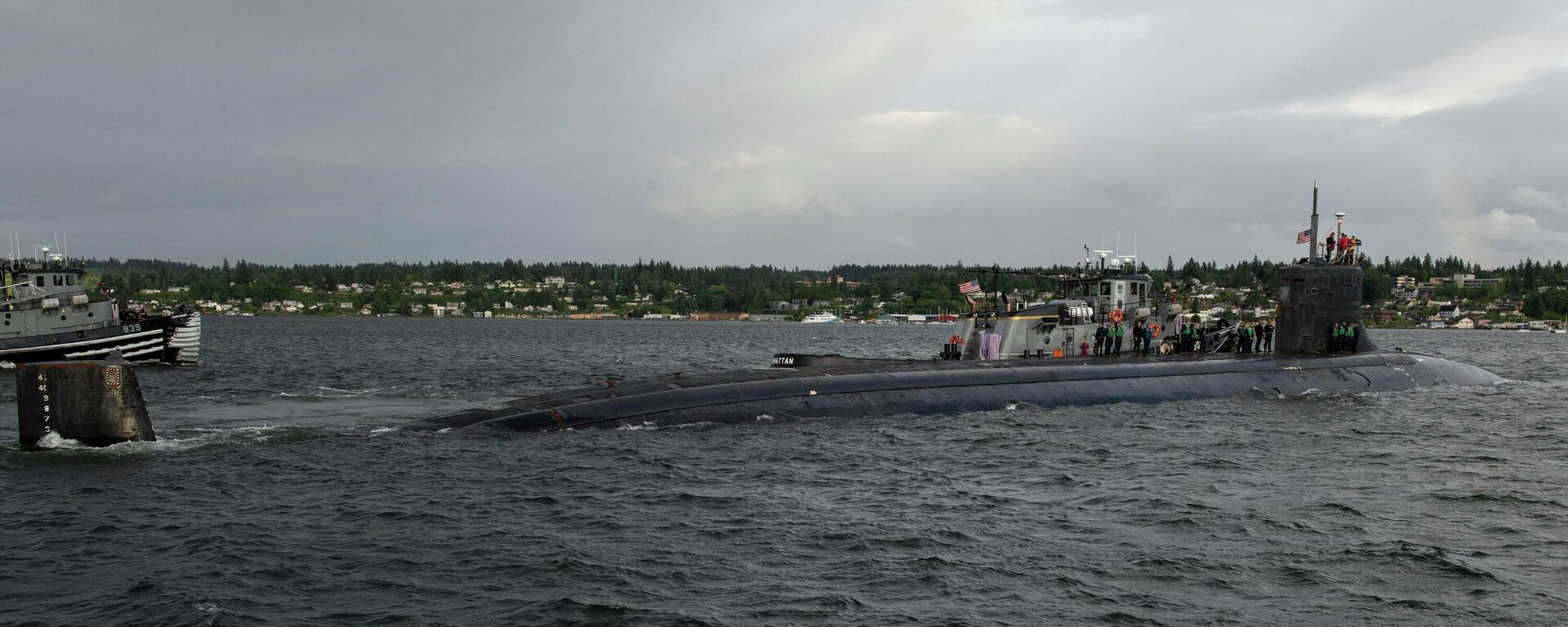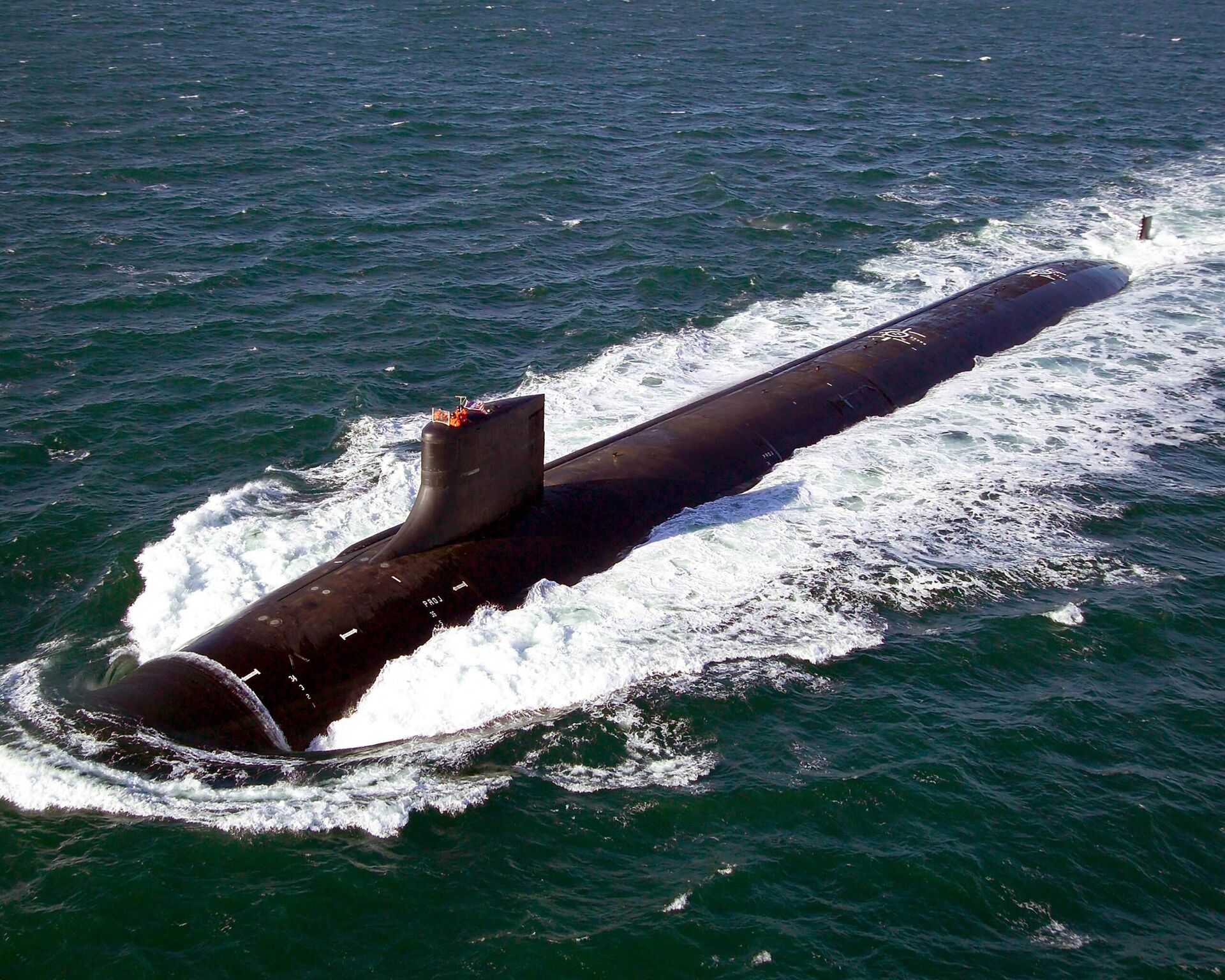https://sputnikglobe.com/20240121/why-are-almost-40-percent-of-us-nuclear-attack-subs-out-of-service-1116293866.html
Why Are Almost 40 Percent of US Nuclear Attack Subs Out of Service?
Why Are Almost 40 Percent of US Nuclear Attack Subs Out of Service?
Sputnik International
18 US fast attack submarines being decommissioned is fraught with far-reaching consequences for America, experts told Sputnik.
2024-01-21T10:50+0000
2024-01-21T10:50+0000
2024-01-21T10:50+0000
military
us
submarines
nuclear submarines
fleet
incident
https://cdn1.img.sputnikglobe.com/img/07e4/08/1a/1080286118_0:151:1600:1051_1920x0_80_0_0_6fc5d8e1c43c7287a475ba0ff8870739.jpg
On January 21, 1954, the USS Nautilus, the world’s first nuclear-powered submarine, was launched at the Electric Boat Division of General Dynamics Shipyard in Groton, Connecticut.SIxty-nine years later, a congressional report has revealed that something has gone wrong with the US Navy’s nuclear-powered fast submarine fleet. Of the 49 multi-purpose attack submarines (SSNs) in the navy, 18 are currently out of service for repairs, per the report. So how did this happen? Sputnik explores.What's in the Report? As of 2023, at least 37% of the entire fleet of SSNs have been temporarily decommissioned for repairs, according to previously undisclosed navy data published by the Congressional Research Service (CRS).The report cited 18 SSNs that are either in depot maintenance or awaiting maintenance, known as idle. The number is significantly higher than the navy’s target of having a maximum of 20% of all fast attack subs undergoing maintenance at any one time and zero submarines sitting idle and waiting to begin repairs.The maintenance backlog has “substantially reduced” the number of the SSNs operational at any given moment, reducing the “force’s capacity for meeting day-to-day mission demands and potentially putting increased operational pressure” on fast attack submarines that are in service, CRS naval analyst Ronald O’Rourke said in the report.Which Subs Need Maintenance?The inactive SSNs are not the nuclear ballistic missile Ohio-class submarines, “but fast attack boats, including the Seawolf-class, that can fire torpedoes and Tomahawk cruise missile at vessels and land targets, and perform stealth missions such as surveillance,” Bloomberg earlier reported.As for SSNs, it is the US Navy's hull classification symbol for a nuclear-powered general-purpose attack submarine.'Severe Blow to US Admirals' Pride' The reasons why the 18 SSNs have been temporarily decommissioned should be discussed in light of the US’ self-declared victory in the Cold War, Dandykin insisted.When asked about the condition of the SSNs in service, the analyst pointed to a spate of problems with the maintenance and qualifications of crews, which he said resulted earlier in various navigational incidents.Connecticut Sub Crash One of the major incidents happened to the USS Connecticut in the South China Sea in October 2021.A subsequent navy investigation into the crash of the Seawolf-class submarine into an underwater ridge in the sea found that the incident was “preventable” and that it followed navigation planning and risk management mistakes, as well as other errors.Another incident dates back to January 9, 2005, when one crewman died after the US nuclear submarine San Francisco ran aground off Guam in the Pacific Ocean. Twenty-three crewmen were injured in the incident.In February 2001, the USS Greeneville's rudder tore through the Japanese fishing boat Ehime Maru's lower deck during a fast surface maneuver, sinking the vessel within minutes. Nine people aboard died, including students and instructors in commercial fishing.Repercussions Operational pressure on the SSNs that are still in service is almost sure to increase, which means that their life span may be reduced and the construction of more such submarines will be needed, Dandykin meanwhile went on to say. This will, in turn, lead to spending hefty sums from the US’ defense budget, he added.He was echoed by Earl Rasmussen, a retired lieutenant colonel with over 20 years in the US Army, who told Sputnik that the fact that 18 SSNs are now out of service means that the US Navy will have to limit its operations in the Red Sea, the Mediterranean, and the South China Sea.
https://sputnikglobe.com/20221205/how-many-nuclear-submarines-does-the-us-have-1105057400.html
https://sputnikglobe.com/20211019/beijing-demands-us-provide-full-details-of-nuclear-submarine-incident-1090047639.html
https://sputnikglobe.com/20240120/how-could-red-sea-standoff-affect-oil-supplies--1116285141.html
Sputnik International
feedback@sputniknews.com
+74956456601
MIA „Rossiya Segodnya“
2024
Oleg Burunov
https://cdn1.img.sputnikglobe.com/img/07e4/09/0b/1080424846_0:0:2048:2048_100x100_80_0_0_3d7b461f8a98586fa3fe739930816aea.jpg
Oleg Burunov
https://cdn1.img.sputnikglobe.com/img/07e4/09/0b/1080424846_0:0:2048:2048_100x100_80_0_0_3d7b461f8a98586fa3fe739930816aea.jpg
News
en_EN
Sputnik International
feedback@sputniknews.com
+74956456601
MIA „Rossiya Segodnya“
Sputnik International
feedback@sputniknews.com
+74956456601
MIA „Rossiya Segodnya“
Oleg Burunov
https://cdn1.img.sputnikglobe.com/img/07e4/09/0b/1080424846_0:0:2048:2048_100x100_80_0_0_3d7b461f8a98586fa3fe739930816aea.jpg
the world’s first nuclear-powered submarine, navy data published by the congressional research service, 18 decommissioned us fast attack submariunes, us nuclear subs-related incidents
the world’s first nuclear-powered submarine, navy data published by the congressional research service, 18 decommissioned us fast attack submariunes, us nuclear subs-related incidents
Why Are Almost 40 Percent of US Nuclear Attack Subs Out of Service?
Eighteen fast attack submarines are being temporarily decommissioned for repairs, a move that is fraught with far-reaching consequences for the US, experts told Sputnik.
On January 21, 1954, the USS Nautilus, the world’s first nuclear-powered submarine, was launched at the Electric Boat Division of General Dynamics Shipyard in Groton, Connecticut.
SIxty-nine years later, a congressional report has revealed that something has gone wrong with the US Navy’s nuclear-powered fast submarine fleet. Of the 49 multi-purpose attack submarines (SSNs) in the navy, 18 are currently out of service for repairs, per the report.
So how did this happen? Sputnik explores.
As of 2023, at least 37% of the entire fleet of SSNs have been temporarily decommissioned for repairs, according to previously undisclosed navy data published by the Congressional Research Service (CRS).
The report cited 18 SSNs that are either in depot maintenance or awaiting maintenance, known as idle. The number is significantly higher than the navy’s target of having a maximum of 20% of all fast attack subs undergoing maintenance at any one time and zero submarines sitting idle and waiting to begin repairs.

5 December 2022, 13:01 GMT
The maintenance backlog has “substantially reduced” the number of the SSNs operational at any given moment, reducing the “force’s capacity for meeting day-to-day mission demands and potentially putting increased operational pressure” on fast attack submarines that are in service, CRS naval analyst Ronald O’Rourke said in the report.
The Naval Sea Systems Command responded by blaming "planning, material availability, and shipyard execution." The service has launched several initiatives to address these "primary maintenance delay" factors, the command added.
Which Subs Need Maintenance?
The inactive SSNs are not the nuclear ballistic missile Ohio-class submarines, “but fast attack boats, including the Seawolf-class, that can fire torpedoes and Tomahawk cruise missile at vessels and land targets, and perform stealth missions such as surveillance,” Bloomberg earlier reported.
As for SSNs, it is the US Navy's hull classification symbol for a nuclear-powered general-purpose attack submarine.
'Severe Blow to US Admirals' Pride'
Taking almost 40 percent of US fast attack submarines out of service is "quite a big blow to the pride of American admirals and sailors," Vasily Dandykin, a Russian veteran military analyst and retired Russian Navy captain 1st rank, told Sputnik.
The reasons why the 18 SSNs have been temporarily decommissioned should be discussed in light of the US’ self-declared victory in
the Cold War, Dandykin insisted.
"After announcing this win, Americans turned a blind eye to maintenance-related issues," the analyst said, adding that "the delayed repairs shorten the lifespan of a submarine."
When asked about the condition of the SSNs in service, the analyst pointed to a spate of problems with the maintenance and qualifications of crews, which he said resulted earlier in various navigational incidents.
One of the major incidents happened to the USS Connecticut in the South China Sea in October 2021.
A subsequent navy investigation into the crash of the Seawolf-class submarine into an underwater ridge in the sea found that the incident was “preventable” and that it followed navigation planning and risk management mistakes, as well as other errors.
The failures “fell far below US Navy standards,” and the incident left the fast attack submarine unable to operate “for an extended period of time” because of the damage, the probe pointed out. The Connecticut reportedly won’t be back in service until early 2026 at the soonest.

19 October 2021, 18:52 GMT
Another incident dates back to January 9, 2005, when one crewman died after the US nuclear submarine San Francisco ran aground off Guam in the Pacific Ocean. Twenty-three crewmen were injured in the incident.
In February 2001, the USS Greeneville's rudder tore through the Japanese fishing boat Ehime Maru's lower deck during a fast surface maneuver, sinking the vessel within minutes. Nine people aboard died, including students and instructors in commercial fishing.
Operational pressure on the SSNs that are still in service is almost sure to increase, which means that their life span may be reduced and the construction of more such submarines will be needed, Dandykin meanwhile went on to say. This will, in turn, lead to spending hefty sums from the US’ defense budget, he added.
He was echoed by
Earl Rasmussen, a retired lieutenant colonel with over 20 years in the US Army, who told Sputnik that the fact that 18 SSNs are now out of service means that the US Navy will have to limit
its operations in the Red Sea, the Mediterranean, and the South China Sea.
"Almost 40% of the SSNs being decommissioned will impact our capability to deploy our reach and to deploy the defensive capability," Rasmussen pointed out. The US Navy is "below its optimal or even projected readiness capability," the US expert concluded.

20 January 2024, 09:32 GMT







